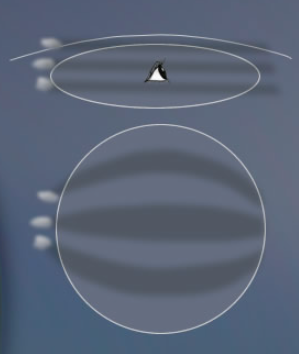Sky Wide Rays
Exploring the Phenomenon of Sky Wide Rays
Have you ever looked up at the sky and noticed beautiful rays of light extending across the heavens? These captivating beams, known as sky wide rays, are a fascinating atmospheric optics phenomenon that can leave us in awe of nature's wonders. In this article, we will delve deeper into the world of sky wide rays, uncovering their origins, characteristics, and the science behind their formation.
The Play of Shadows and Light
Sky wide rays are often observed when there are clouds present in the sky. These clouds act as canvases upon which shadows and light intertwine, creating a mesmerizing display. When the sun is low on the horizon, its rays pass through gaps in the clouds, casting shadows in the atmosphere. These shadows appear as parallel tubes of dark air that seemingly converge towards the position of the sun and its opposite point in the sky, known as the antisolar point.
Crepuscular and Anticrepuscular Rays
As sunlight streams through the gaps in the clouds, two types of rays become apparent. The sunward rays, which appear to converge towards the position of the sun, are called crepuscular rays. These rays are often seen radiating from behind clouds, resembling beams of light piercing through the sky. On the other hand, the rays that converge towards the antisolar point are known as anticrepuscular rays. These rays can be observed on the opposite side of the sky from where the sun is located.
The Earth's Shadow Makes an Entrance
In addition to the shadows cast by clouds, another shadow begins to emerge on the eastern side of the sky. This shadow is cast by none other than our own planet Earth itself. As the Earth rotates, it casts a shadow into our atmosphere, creating a fascinating interplay of light and darkness. This shadow adds yet another layer of intrigue to the already captivating sky wide rays.
The Science Behind Sky Wide Rays
The formation of sky wide rays can be attributed to a combination of perspective and the scattering of sunlight. When sunlight interacts with particles in the atmosphere, such as dust or water droplets, it scatters in various directions. This scattering phenomenon causes the rays of light to become more visible, especially when they pass through gaps in the clouds. The convergence of these rays towards the sun and the antisolar point is a result of our perception, as our eyes trace their paths back to their apparent sources.
A Spectacle of Nature's Beauty
Sky wide rays are a true spectacle of nature's beauty, captivating observers with their ethereal presence. They serve as a reminder of the ever-changing nature of our atmosphere and the interplay between light and shadow. Whether witnessed during a sunrise or sunset, these rays create a magical ambiance, adding a touch of enchantment to our daily lives.
Capturing the Moment
Photographers and sky enthusiasts have taken it upon themselves to capture the mesmerizing beauty of sky wide rays. Through their lenses, they freeze these fleeting moments, preserving them for all to admire. By documenting these phenomena, they not only share the wonder of the natural world but also contribute to our collective understanding of atmospheric optics.
Conclusion
The phenomenon of sky wide rays is a captivating display of nature's artistry. These ethereal beams of light, formed by the interplay of shadows and sunlight, offer us a glimpse into the complex workings of our atmosphere. From crepuscular rays radiating towards the sun to anticrepuscular rays converging at the antisolar point, each sighting is a unique and awe-inspiring experience. So, next time you find yourself gazing up at the sky, take a moment to appreciate the mesmerizing beauty of sky wide rays and the wonders that lie above us.

Sky-Wide Shadows & Rays imaged by Tom Martinez at a star party near Marion, Kansas. ©Tom Martinez, shown with permission.
By an odd coincidence Tom took fish-eye images of sky-wide rays on two successive years at the same gathering (earlier rays).
Clouds in the west have cast the shadows. They are parallel tubes of dark air but appear by perspective to converge on the position of the sun and on the antisolar point in the sky opposite . The sunward rays are called crepuscular and those opposite are anticrepuscular.
Another shadow is starting to rise in the east (right), this is the shadow cast by the earth itself into our atmosphere.

Note: this article has been automatically converted from the old site and may not appear as intended. You can find the original article here.
Reference Atmospheric Optics
If you use any of the definitions, information, or data presented on Atmospheric Optics, please copy the link or reference below to properly credit us as the reference source. Thank you!
-
<a href="https://atoptics.co.uk/blog/sky-wide-rays-2/">Sky Wide Rays</a>
-
"Sky Wide Rays". Atmospheric Optics. Accessed on December 26, 2024. https://atoptics.co.uk/blog/sky-wide-rays-2/.
-
"Sky Wide Rays". Atmospheric Optics, https://atoptics.co.uk/blog/sky-wide-rays-2/. Accessed 26 December, 2024
-
Sky Wide Rays. Atmospheric Optics. Retrieved from https://atoptics.co.uk/blog/sky-wide-rays-2/.